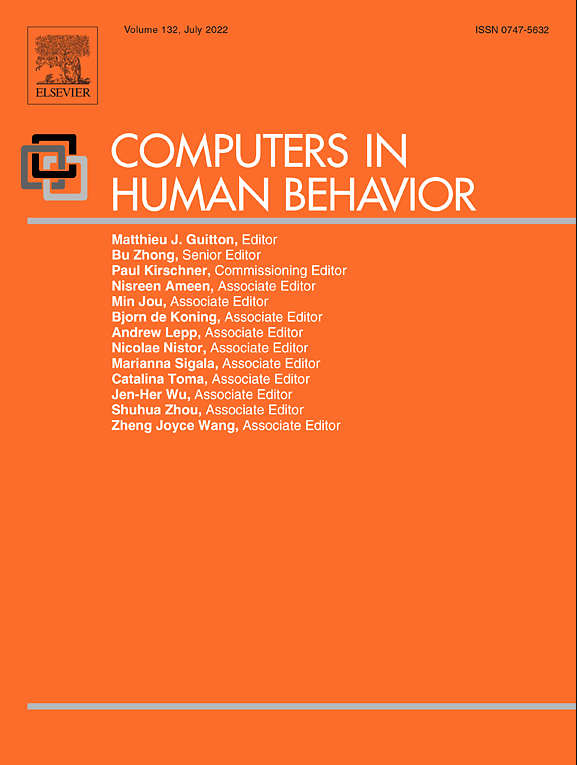Editorial Board / Publication information
Special issue on advanced intelligent computing theory and methodology
Missing data imputation in multivariate data by evolutionary algorithms
DepthLimited crossover in GP for classifier evolution
Interactive genetic algorithms with individual’s fuzzy fitness
Emergency resources scheduling based on adaptively mutate genetic algorithm
Machine learning approach to model sport training
HDR Image Generation based on Intensity Clustering and Local Feature Analysis
Interactive component extraction from fEEG, fNIRS and peripheral biosignals for affective brain–machine interfacing paradigms
Analysis of shipbuilding fabrication process with enterprise ontology
Assisted-care robot based on sociological interaction analysis
Self-adaptation of learning rate in XCS working in noisy and dynamic environments
Segment-based emotion recognition from continuous Mandarin Chinese speech
Estimation of word emotions based on part of speech and positional information
Personal identification based on finger-vein features
Shot retrieval based on fuzzy evolutionary aiNet and hybrid features
A representation method for performance specifications in UML domain
On the relation between cognitive and biological modelling of criminal behaviour
Age and technology innovation in the workplace: Does work context matter?
The lies we tell and what they say about us: Using behavioural characteristics to explain Facebook activity
Enhancing graph production skills via programmed instruction: An experimental analysis of the effect of guided-practice on data-based graph production
Revealing only the superficial me: Exploring categorical self-disclosure online
Designing motivational agents: The role of praise, social comparison, and embodiment in computer feedback
The effect of video feedback delay on frustration and emotion communication accuracy
Who uses Facebook? An investigation into the relationship between the Big Five, shyness, narcissism, loneliness, and Facebook usage
Effects of spatial ability and richness of motion cue on learning in mechanically complex domain
Exposure to violent computer games and Chinese adolescents’ physical aggression: The role of beliefs about aggression, hostile expectations, and empathy
Empirical investigation of customers’ channel extension behavior: Perceptions shift toward the online channel
“Sexting” and adult romantic attachment
Internet and mobile phone text-messaging dependency: Factor structure and correlation with dysphoric mood among Japanese adults
The effect of the nonhuman external regulator’s answer-until-correct (AUC) versus knowledge-of-result (KR) task feedback on children’s behavioral regulation during learning tasks
The effect of nonhuman’s external regulation on detecting the natural development process of young children’s self-regulation during learning tasks
Inter-relationships among dominance, energetic and tense arousal, and pleasure, and differences in their impacts under online vs. offline environment
Personal Internet use at work: Understanding cyberslacking
Examining knowledge contribution from the perspective of an online identity in blogging communities
Flashlight – Recording information acquisition online
Improving the scaffolds of a mobile-assisted Chinese character forming game via a design-based research cycle
Computer-mediated communication and risk-taking behaviour
Parenting style and parental monitoring with information communication technology: A study on Japanese junior high school students and their parents
The effect of informal social support: Face-to-face versus computer-mediated communication
The role of trait emotional intelligence in gamers’ preferences for play and frequency of gaming
Internet use and online social support among same sex attracted individuals of different ages
A picture is worth a thousand words: A content analysis of Facebook profile photographs
Preventing human error: The impact of data entry methods on data accuracy and statistical results
Understanding social networking sites adoption in China: A comparison of pre-adoption and post-adoption
Evaluating learning, design, and engagement in web-based learning tools (WBLTs): The WBLT Evaluation Scale
Internet use, happiness, social support and introversion: A more fine grained analysis of person variables and internet activity
Rate My Expectations: How online evaluations of professors impact students’ perceived control
E-Learning technologies: A key to Dynamic Capabilities
Reliability and validity of self-reported burnout in college students: A cross randomized comparison of paper-and-pencil vs. online administration
Core capabilities for practitioners in achieving e-business innovation
‘Migrating to a new virtual world’: Exploring MMORPG switching through human migration theory
A generic dynamic control task for behavioral research and education
Do millennial undergraduates’ views of writing differ when surveyed online versus on paper?
Antecedents of computer self-efficacy: A study of the role of personality traits and gender
Validity and reliability of the IAT: Measuring gender and ethnic stereotypes
Attentional bias in excessive massively multiplayer online role-playing gamers using a modified Stroop task
Passively recognising human activities through lifelogging
The associations between young adults’ face-to-face prosocial behaviors and their online prosocial behaviors
To stick or not to stick: The social response theory in the development of continuance intention from organizational cross-level perspective
Effects of self-disclosure on relational intimacy in Facebook
Evaluation of complex and dynamic safety tasks in human learning using the ACT-R and SOAR skill acquisition theories
Intention to upload video content on the internet: The role of social norms and ego-involvement
Measurement invariance in training evaluation: Old question, new context
Cognitive consequences of making computer-based learning activities more game-like
Blog scrubbing: Exploring triggers that change privacy rules
The effect of an information ethics course on the information ethics values of students – A Chinese guanxi culture perspective
Realism, idealization, and potential negative impact of 3D virtual relationships
Effect of high-level content organizers on hypertext learning
Comparison of 3D and 2D menus for cell phones


